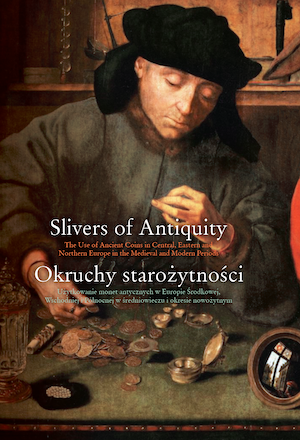ROMAN COINS FROM LATE MEDIEVAL AND MODERN PERIOD FINDS IN THE TERRITORY OF PRESENT-DAY POLAND / MONETY RZYMSKIE ZE ZNALEZISK
PÓŹNOŚREDNIOWIECZNYCH I NOWOŻYTNYCH Z OBSZARU WSPÓŁCZESNEJ POLSKI
ROMAN COINS FROM LATE MEDIEVAL AND MODERN PERIOD FINDS IN THE TERRITORY OF PRESENT-DAY POLAND
Author(s): Grzegorz Śnieżko
Subject(s): Anthropology, Archaeology, Cultural Anthropology / Ethnology
Published by: Wydawnictwa Uniwersytetu Warszawskiego
Keywords: ancient coins; Roman coins; coin finds; coin hoards; late medieval context; modern context; monetary circulation
Summary/Abstract: The paper discusses the issue of presence of ancient coins in late medieval and modern period finds from the territory of Poland. The analysis demonstrated that these finds solely contained specimens of the Roman Empire. They have been recorded in three late medieval and six modern period hoards. What is more, such coins were also found in archaeological contexts that imply that they may have been used as foundation sacrifices (two cases), or as a pendant, perhaps of devotional nature (one case). They were also given as money offerings in churches and were used as bullion sources as well as for ornamental purposes. In three urban centres such coins were found in the course of archaeological research from settlement layers and features. A diversification of coins with regard to their chronology and denominations demonstrates a correlation with waves of inflow of Roman coins to the Polish lands in antiquity, reconstructed on the basis of numismatic finds. This implies that Roman coins in the Late Middle Ages and in the modern period came from incidental discoveries of money which had been deposited in Roman times. Late medieval and modern period hoards with Roman coins are remarkable for the presence of money of very diversified origin and chronology. This seems to demonstrate that in the majority of such cases, the Roman coins had probably been used as currency. On the other hand, it is impossible to completely reject the assumption that at least in some cases these coins became part of hoards for reasons related to folk beliefs.
- Page Range: 65-87
- Page Count: 23
- Publication Year: 2020
- Language: English, Polish
- Content File-PDF

